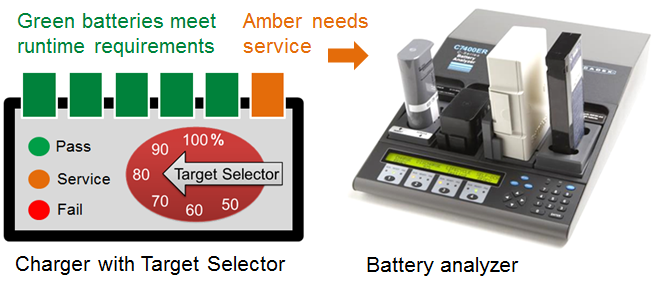Newsletter - February 2023
Last week I spoke at the MD&M, a large medical conference in Anaheim, California. The title of my presentation was How to make a Smart Battery Trustworthy: Improving system-reliability with Diagnostic Battery Management. The international conference was well attended.
I had the FDA in mind while preparing my presentation. In an earlier survey the FDA stated that “Up to 50% of issues in hospitals are battery related.” A speaker at the conference commented further that the battery in medical devices is the cause of failure in about 900 times of 1500 malfunctions. Battery issues are not improving and industries need help.
I reminded the audience that a charger is no longer an afterthought and will serve as an integral part in a system by providing battery diagnostics. SoH is a growing concern because the battery can be the least reliable part and may need several replacements during the life of a product.
I had the opportunity to speak at MD&M conference before. After one such presentation in 2013, the FDA invited Cadex for a two-day seminar at their headquarters in Maryland to discuss battery problems in healthcare with this conclusion:
- Deficiency in quality assurance in batteries by device manufacturers.
- Lack of understanding in battery system integration.
- Not knowing the end of battery life.
The FDA was indeed present again last week. We discussed improvements in battery diagnostics and we set up a meeting to find solutions in battery care. Our answer is the Universal Supervisor Charger (USC), a cost-effective unit that is diagnostic and scalable. A user may start with a standalone charger and expand to building an advanced battery management system as illustrated below. Slide 8 on the attached MD&S PowerPoint presentation demonstrates the concept.

Next-gen Cadex products are minimized with plug-and-play options
When plugging a SMBus battery into the USC, the SoH Light flashes briefly if the battery meets performance; amber advise calibration, a service that can be completed in the charger. Performance is based on the FCC (Full Charge Capacity) level representing the “digital capacity. The gatekeeper calling calibration is the Target that is defaulted 80% and can be changed. Slide 9 demonstrates the benefit of the USC when working in standalone mode.

SoH Light assesses battery
Connecting the USC to a PC enables setting the Target Selector, updating firmware and displaying battery SoH by the Fishbowl icon as illustrated in slide 10. The Cadex Link enabling the use of a PC with the USC and next-gen battery analyzers will sell for $99.
Cloud Analytics, as shown in slide 11, advances the charger into a powerful battery management system. The Cadex Cloud will verify the remaining charge before charge with SMBus batteries; measure the energy consumed and reveal the Remaining Useful Life in years in a graphic display. Predictive algorithm enables tracking and documenting of battery behavior similar to observing a pharmaceutical product. The Cadex Cloud runs in the background with minimal user intervention on a subscription program.
The USC does not replace the battery analyzer but complements it. In the example below the USC passes five batteries with one pack needing service. Although calibration can be done in the charger, the use of a battery analyzer offers benefits by providing the “measured capacity.” A USC analyzer combo can be sold to service centers testing portable devices in high volume. We hear that the battery is also the least reliable part causing the most headaches.

Five batteries pass; one needs service
Hospitals are concerned about escalating costs replacing batteries with uncertain performance. A manager at DOE discovered that: “Every year roughly one million usable lithium-ion batteries are being sent for recycling with most having a capacity of up to 80%.” This occurs while battery manufacturers focus on the super battery from lab to market, wishing the buyer good luck. At Cadex we take a different position by caring for the battery from workforce to retirement.
When available, the USC will come in one, two and six bays with interchangeable battery adapters to service smart and regular batteries side-by-side. It should be noted that only smart batteries provide diagnostic function. Regular batteries require a C-code that is embedded in the battery adapter. The USC operates on Level 3 as outlined in slide 3.
